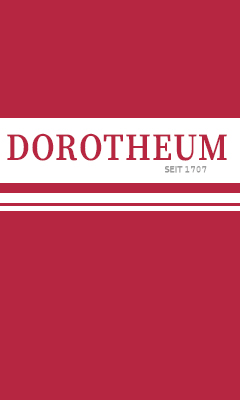German Police S 84/98 Bayonet
SKU: 52.GOR.04.04.03.001
Estimated market value:





Estimated market value:
Attributes
History
During the Third Reich, an effort was made to unite all of Germany’s disparate provincial police forces and agencies into a single cohesive national unit. To attain this goal, Reichsführer-SS Heinrich Himmler was named Chief of the German Police in the Ministry of the Interior in June 1936. That same month, Himmler implemented new standardized uniforms, headgear, and insignia. The uniforms worn prior to Himmler’s appointment were often navy blue, particularly in what had been Prussia. The new uniforms were green, in a shade that was then dubbed “Police green”.
The German Police were divided into two main units, the Ordnungspolizei (Orps or Regular Police) and the Sicherheitspolizei (Secret Police); the Ordnungspolizei were unofficially called the green police (Grüne Polizei) as a result of their uniform colour. The Sicherheitspolizei were made up of two main organizations, the Gestapo and the Kriminalpolizei (Criminal Investigation Police). At the beginning of the Second World War, the Sicherheitspolizei were brought under the auspices of the Reich Main Security Office.
The S 84/98 Police Bayonets were originally introduced in 1905 and produced during the Imperial period, and then reissued, reworked, and reproduced to fit the Weimar and Third Reich era regulations. They were worn by all Wachtmeister ranked personnel who were not permitted to wear the police sword or sabre. The S 84/98 Bayonets were also worn by Officers and Non-Commissioned Officers (NCOs) while in their combat uniform.
From 1918 to 1927, S 84/98 Police Bayonets were reissued and refurbished for use by Police and Army personnel. These demilitarized bayonets include a “V” notch into the top of the pommel, and/or a filled-in rifle lug slot, and/or ground-down press releases on the pommel. Other Weimar modification include polishing and bluing the entire bayonet and scabbard, adding slots for screwdrivers into the grip rivets and the pommel press studs, and stamping the government property stamp “1920” into the crossguard obverse. Imperial marks may be featured on refurbished Weimar and Third Reich era bayonets, but they tended to be removed during the refurbishment process. Additional Weimar unit marks may be featured on the reverse crossguard, and/or the reverse of the scabbard.
From 1927 to 1930, new bayonets were manufactured by Weyersberg & Kirschbaum. These bayonets feature the manufacturer mark “W.u.K.” on the ricasso.
After 1933, new attachable bayonets were secretly produced for use in the Police and Wehrmacht. These secret bayonets were manufactured from 1934 to 1937, and are known as S-code bayonets. After 1939, the S 84/98 bayonets were openly produced.
The Third Reich era S 84/98 bayonet design mirrors the form of the S 84/98 bayonets produced from 1927 to 1930 by Weyersberg & Kirschbaum. The Third Reich era German Police S 84/98 bayonets share the same form as other S 84/98 bayonets from this era, but may be identified through police property and unit marks.
The handle of the bayonet is made up of the pommel, the grip, and the crossguard. The pommel has the form of a blunted beak. The grips could be made from smooth wood or plastic/bakelite with 7 grooves. The crossguards on these bayonets do not have any extending arms/quillons, but the reverse may have a police unit mark. The press studs and grip rivets feature screwdriver slots.
The Third Reich era blades are composed of blued steel, and the blade ricasso is squared. Depending on the date of manufacture, different marks were stamped/etched onto the obverse and/or reverse ricasso. From 1934 to 1937, secret S-codes were stamped on the ricasso. From 1937 to 1940, manufacture marks were etched into the reverse ricasso. From 1940 to 1945, secret manufacturer codes were stamped on the ricasso, along with the last two digits of the acceptance/manufacturer year on the blade spine. From 1934 to 1945, serial numbers may be stamped on the blade spine.
The scabbard is also composed of blued steel, with a frog stud on the obverse and a scalloped throat piece fitting. The serial number sequences are located on the obverse scabbard, and from 1933 to 1940, manufacture marks may also be located on the scabbard reverse.
These S84/98 bayonet marks correlate to specific years of production.
From 1933 to 1945, the S 84/98 obverse of the ricasso and scabbard were stamped with serial numbers ranging from 1 to 9999. When 9999 was reached in a year, a lower case letter was featured beside the number and separated with a backslash “/”; starting from “a,” going to “z,” and not using “j”. If “z” was reached, the letters were restarted and doubled. From 1937 to 1945, the serial numbers were followed by the last two digits of the year of manufacture.
The S 84/98 bayonets produced from 1934 to 1937, are also marked with secret S-codes on the ricasso. These codes are composed of an “S” followed by three numbers, and they are associated with unknown makers. This code is followed by a “K” for the year 1934, a “G” for the year 1935, and from 1936 to 1937, the last two digits of the year of manufacture. Known S-codes include S/155, S/172, S/173, S/174, S/175, S/176, S/177, S/178, S/184, S/185, S/214, S/238, S/239, S/240, S/241, S/244, and S/245.
From 1937 to 1940, the manufacturers were free to place their marks on the reverse ricasso of the blade without any subterfuge.
From 1940 to 1945, the manufacturer marks were replaced with secret manufacturer codes. These codes are preceded by the last two digits of the year in which they were manufactured. The known manufacturer codes include, ab (Mundlos & Co.), agv (Berg & Co.), asw (E. & F. Hörster & Cie.), bym (Maschinenhaus Ferlach), can (Wallmeier Maschinenfabrik - on scabbards), clc (Richard Abr. Herder AG), cof (Carl Eickhorn), cgh (Clemen & Jung), crs (Paul Weyersberg & Co.), cul (Ernst Pack & Söhne), cvl (W.C.K. Stahl u. Eisenwarenfabrik), ddl (Josua Corts Sohn), dot (Waffenwerke Brünn AG), ffc (Friedrich Herder & Sohn), fnj (Alcoso Werke), fze (F.W. Höller & Cie), I (Elite Diamant), jwh (Staatliche Waffenfabrik Chatellerault), pyy (Berg & Co.), sgx (E. & F. Hörster). These marks are located on the ricasso.
When the police property mark is present, it is generally located on the crossguard reverse or the blade spine. The main types of police property marks featured on the S 84/98 Police Bayonets are “P” or “Po.” on the crossguard. Alternatively, on the spine there may be a star/sunburst with a letter below, or the police eagle with a “B”.
The unit marks are made up of a sequence of letters and numbers, and generally featured on the reverse crossguard and scabbard. The most common combination has the first letter associated with the police branch of service (i.e., S for Schutzpolizei), the next for the district (i.e., Mi for Minden), followed by a roman numeral for the duty station, and finally the weapon number in Arabic numerals; such as “S.Sch.I.492.”. These marks vary, wherein some will have cut out the duty station number, while others only indicate the district and weapon number in Arabic numerals, and some only have the weapon number. The unit mark may also be prefixed with the police property mark “P” or “Po.”. Due to the mix-matching of bayonets and scabbard during the refurbishing process, the unit marks on the scabbard do not always match those present on the crossguard reverse.
The silver, red, and black portapee/sword knot was permitted for wear with the Police Dress and Service Bayonets.

Versions
$250 USD
Blade: 250mm; Bayonet: 385mm
Paul Weyersberg & Co., Solingen


Comments
Sign in to comment and reply.


Scroll Top